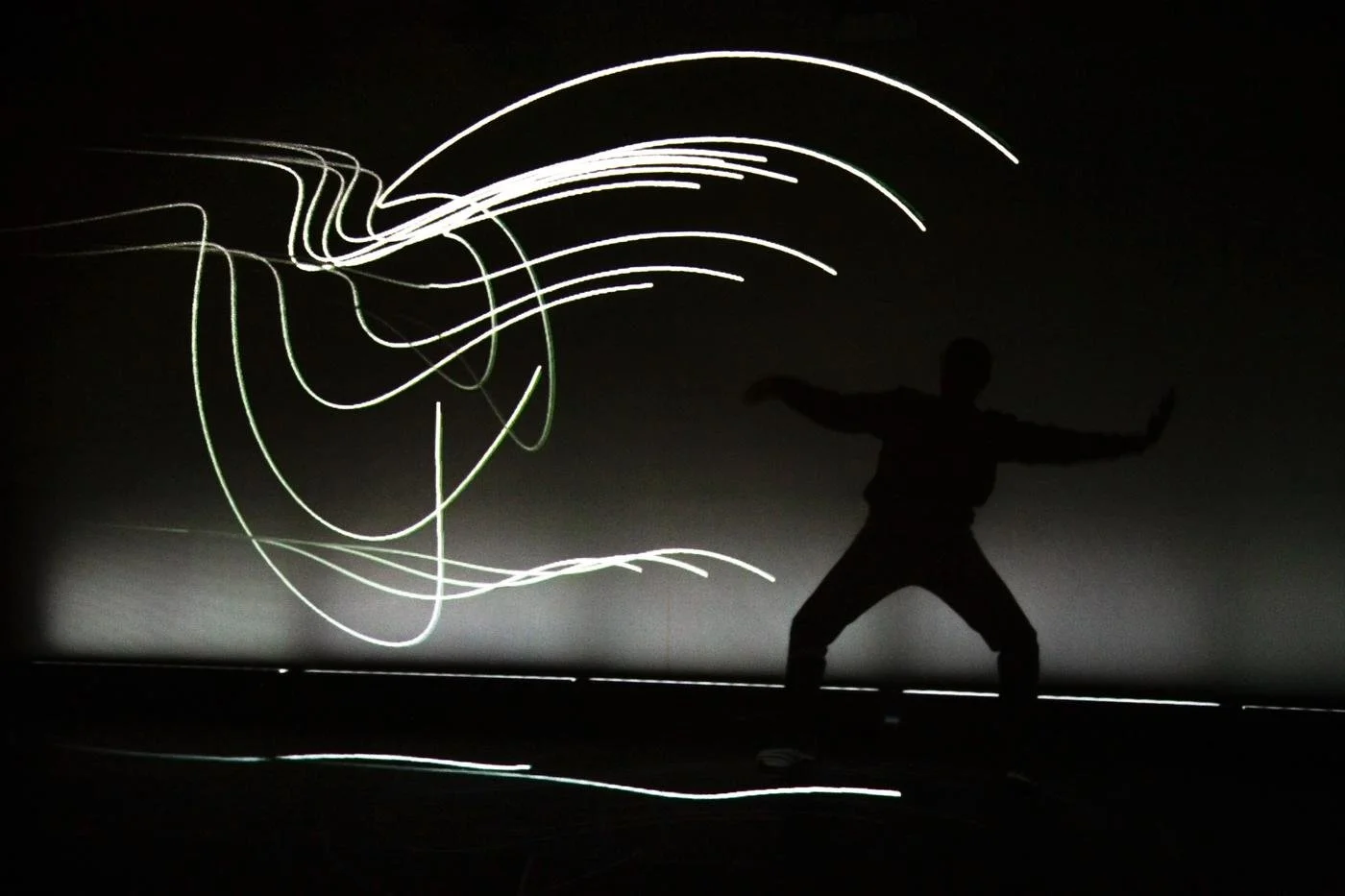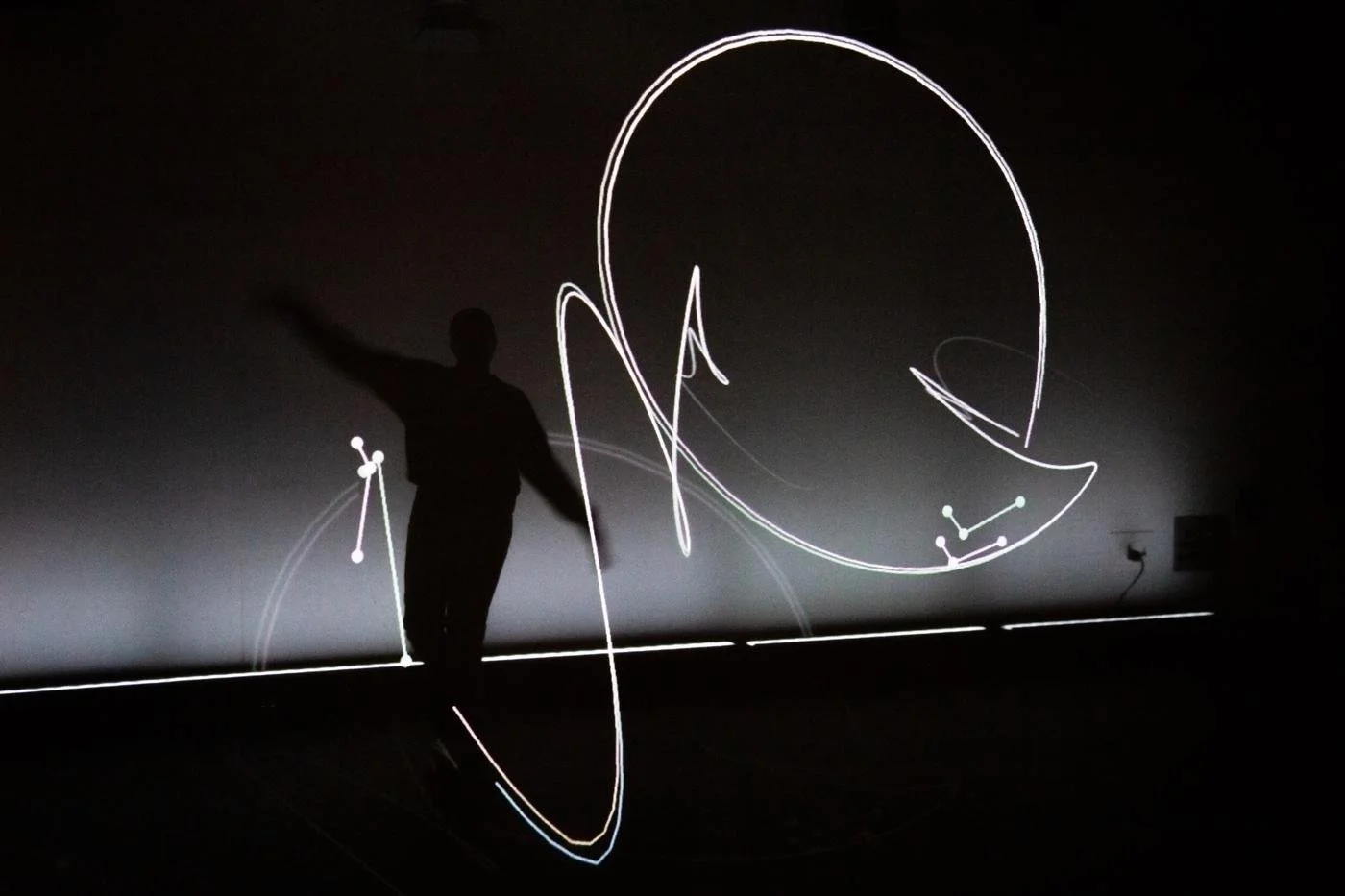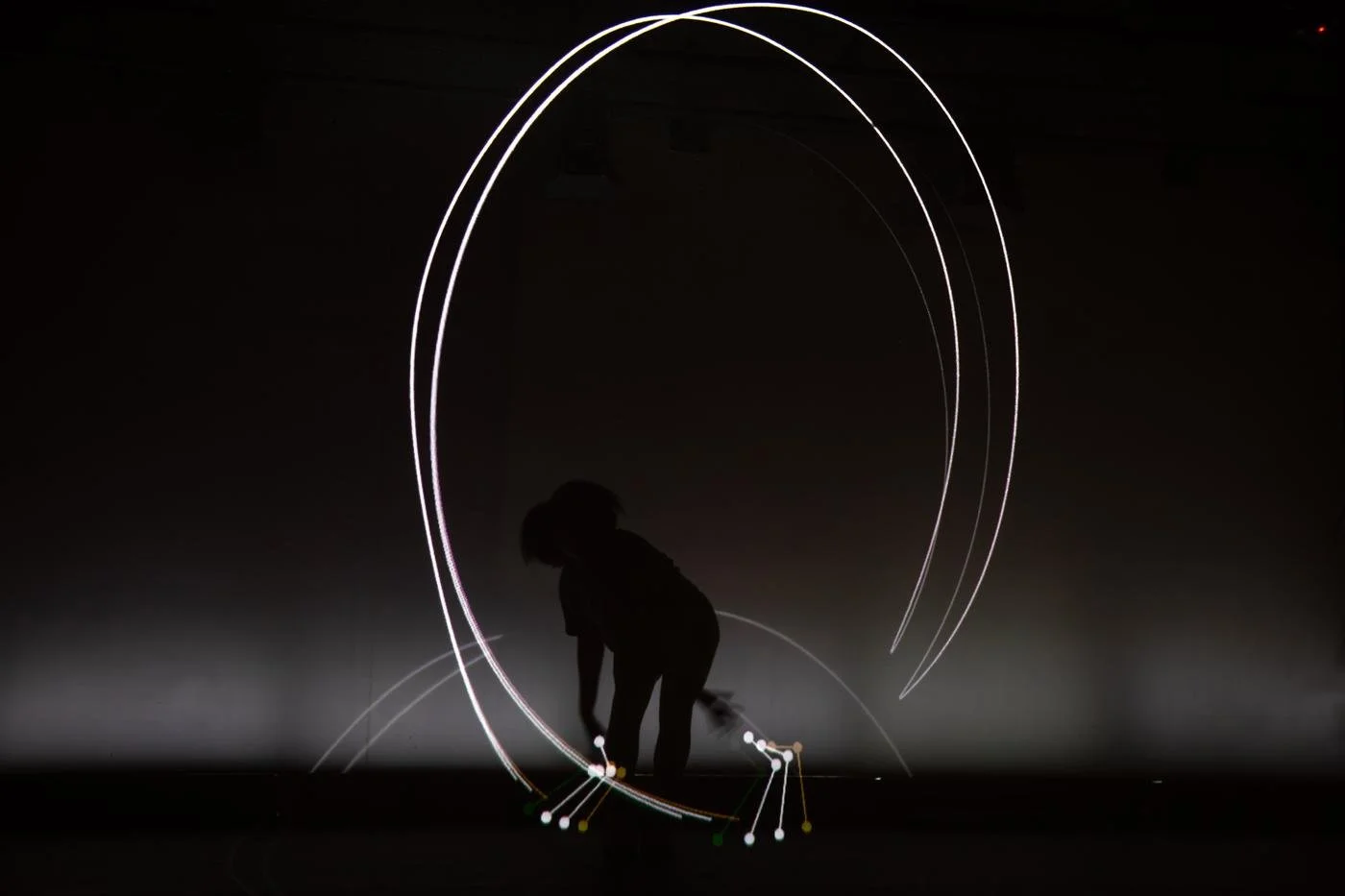2023 Chelsi Alise Cocking and Jimmy Day – Illuminate
Seeing Motion Made Visible – Cocking and Day’s Illuminate
Illuminate (2023) by Chelsi Alise Cocking and Jimmy Day marks a foundational moment in the evolving language of photography. For the first time, viewers can see their own motion visualised in real time, as luminous trails suspended in space. This is not post-production, nor performance capture—it is live, reactive image-making, where motion becomes image the moment it occurs.
Custom-coded visualisation software and spatial computing algorithms power this transformation. As participants move through the installation, the system captures their gestures and instantly renders them as abstract visual forms—echoes of the body looping and drifting through space. The result is a photographic process without a shutter: a continuous, choreographic trace of presence.
Here, the act of photographing motion is redefined. For the first time, it is continuous, real-time, and embodied. Illuminate transforms photography from a moment of freezing time into an active, living encounter with it. What’s being captured isn’t a fixed frame, but the fleeting choreography of the body—made visible as it happens through custom-coded spatial visualisation.
Credit: MIT Media Lab
Author: Cocking, Chelsi Alise and Day, Jimmy (2023)
Title: Illuminate
Date: 2023
Archive: MIT Media Lab
Source: Courtesy of the Artists
Available information: Photograph of Illuminate, an interactive art installation that visually renders real-time movement through custom-coded visualisation software. The installation transforms unseen motion paths into glowing trails, bridging physical presence and digital space. Illuminate (2023, Chelsi Alise Cocking) uses choreographic interfaces to explore spatial computing and bodily abstraction, producing a magical experience of seeing motion in real time.
Additional image credit: MIT Media Lab, Cocking, Chelsi Alise and Day, Jimmy (2023) Illuminate, © Chelsi Cocking and Jimmy Day, used with permission of the artists. https://www.media.mit.edu/projects/illuminate/overview/
Related First Photographs
Exploring the Influence of Time Continuum across Zero Baseline
Time Continuum Study redefines photography’s relationship with the instant. Rather than freezing a fraction of a second, these works allow time to unfold within the image, transforming duration itself into the subject. Through long exposure, sustained observation, or temporal accumulation, motion is absorbed rather than isolated. Light becomes a measure of duration, and the photograph a continuum of experience. By collapsing many moments into one, Time Continuum Study unites stillness and change within a single visible state. The photograph no longer isolates an instant but captures the very passage of time — light acting simultaneously as event and memory.
1886 ÉTIENNE-JULES MAREY – SHAKING A FLEXIBLE ROD
Layered successive phases of movement within one frame, translating wave-like motion into a continuous oscillating form.
1889 ÉTIENNE-JULES MAREY AND GEORGE DEMENY - Pathological Walk from the Front
Rendered human stride as a rhythmic continuum, where each movement overlaps into the next — time embodied in motion.
1935 MAN RAY – SPACE WRITING (SELF-PORTRAIT)
Traced gestures of light over a prolonged exposure, allowing time to reveal movement as self-representation.
1977 HIROSHI SUGIMOTO – TRYLON, NEW YORK
Exposed a film’s entire projection in one frame, distilling hours of motion into a single luminous image.
2020 REGINA VALKENBORGH – PERPETUITY LONGEST EXPOSURE
Traced 2,953 solar arcs over eight years, compressing vast temporal change into one continuous frame.
2023 CHELSI ALISE COCKING AND JIMMY DAY – ILLUMINATE
Rendered human motion as luminous trails in real time, transforming movement into a continuous visual record of gesture and form.
Related First Photographs
Exploring the Influence of Self-Inclusion across Zero Baseline
Self-inclusion in photography places the creator within the frame, not as subject in the traditional sense, but as an active element of the process. In scientific and experimental contexts, this often takes the form of embodied observation—using one’s own presence as the constant in generating reliable, repeatable data. Whether for calibration, as a control in experimental conditions, or to merge observation with participation, it aligns the act of seeing with the act of being seen. This approach transforms the camera into both recorder and witness of the photographer’s presence, producing images where method and subject converge. Self-inclusion bridges the gap between observer and observed, embedding the maker’s role directly into the visual record.
1886 ÉTIENNE-JULES MAREY – SHAKING A FLEXIBLE ROD
Used his own body to generate repeatable motion patterns, embedding himself directly into the process of visual study.
1889 ÉTIENNE-JULES MAREY AND GEORGE DEMENY
Appeared as their own test subjects, integrating the observer into motion studies for calibration and consistency.
1895 RÖNTGEN – FIRST X-RAY
Exposed his wife’s hand to produce the first X-ray image, making a groundbreaking scientific record through a personal and embodied act.
1898 LOUIS BOUTAN - FIRST UNDERWATER PHOTOGRAPH
Entered the aquatic environment with experimental equipment, embedding himself in the process to test and refine submersible photography.
1935 MAN RAY – SPACE WRITING (SELF-PORTRAIT)
Performed gestures with light during long exposure, transforming self-inclusion into a performative, photographic self-portrait.
2023 CHELSI ALISE COCKING AND JIMMY DAY – ILLUMINATE
Rendered human motion as luminous trails in real time, enacting self-inclusion through gesture and transforming movement into a continuous photographic record.


